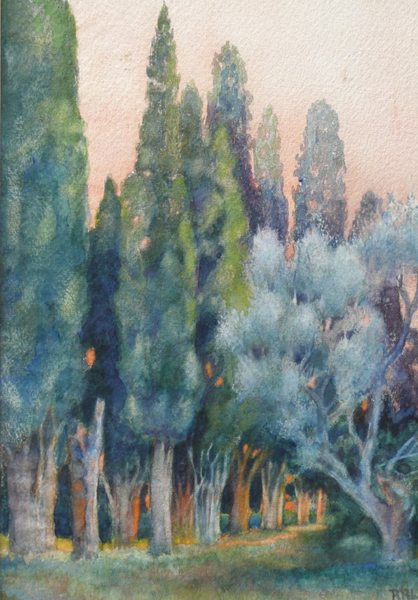 |
The ‘Byron’ Cypress Avenue at the Old Gout House* - Boudjah
Byron was said to have composed some of the first two Cantos of Childe Harold amongst the cypresses, when visiting in 1810. The picture belonged to Emily McVittie (nee Weber), whose family were friends and neighbours of Joseph and Margaret Bliss, the owners from 1890 to 1902, when they returned to England. Emily’s grand-daughter Jenny Rake, has given the picture to Oliver Forge, great-grandson of Joseph and Margaret.
It was painted in 1921, by a Mrs B.Bliss, who taught art to Emily’s daughter Dora, at the Rev. Lucius Fry’s school in Smyrna. Oliver has not yet found if there’s a family link. The name Bliss appears among evacuees in 1922.
The accompanying photograph indicates the Cypress Avenue, for all its later romantic associations, may have had a practical purpose - it’s at the edge of the garden, perhaps for privacy, or shade. Visiting in 1966, Dora looked across this field, as my father had done in 1965. In the intervening year the cypresses had been felled. In fact, they must have stood since the late eighteenth century.
* The house is described as originally a hunting lodge. Oliver Forge says it was known as ‘The Tarlah’ in his family. In my family it was ‘the Gordon property’ - was this the last family in the house? It’s described as empty for some time before 1922.
Nancy Stevenson (nee McVittie), information from family papers.
Byron was said to have composed some of the first two Cantos of Childe Harold amongst the cypresses, when visiting in 1810. The picture belonged to Emily McVittie (nee Weber), whose family were friends and neighbours of Joseph and Margaret Bliss, the owners from 1890 to 1902, when they returned to England. Emily’s grand-daughter Jenny Rake, has given the picture to Oliver Forge, great-grandson of Joseph and Margaret.
It was painted in 1921, by a Mrs B.Bliss, who taught art to Emily’s daughter Dora, at the Rev. Lucius Fry’s school in Smyrna. Oliver has not yet found if there’s a family link. The name Bliss appears among evacuees in 1922.
The accompanying photograph indicates the Cypress Avenue, for all its later romantic associations, may have had a practical purpose - it’s at the edge of the garden, perhaps for privacy, or shade. Visiting in 1966, Dora looked across this field, as my father had done in 1965. In the intervening year the cypresses had been felled. In fact, they must have stood since the late eighteenth century.
* The house is described as originally a hunting lodge. Oliver Forge says it was known as ‘The Tarlah’ in his family. In my family it was ‘the Gordon property’ - was this the last family in the house? It’s described as empty for some time before 1922.
Nancy Stevenson (nee McVittie), information from family papers.
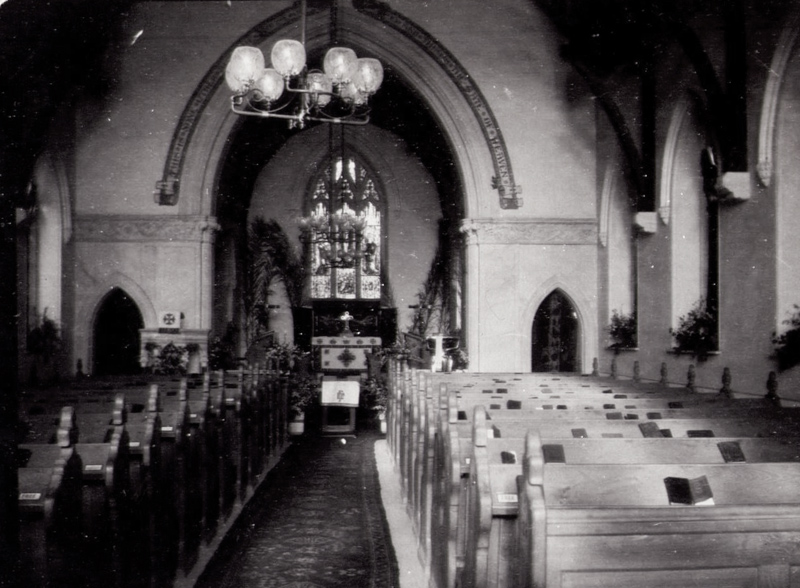 |
These caption reads: The church in Boudja built while J.T. Wolters was chaplain. In reality this is St John’s in Punta / Alsancak, still serving its congregation today.
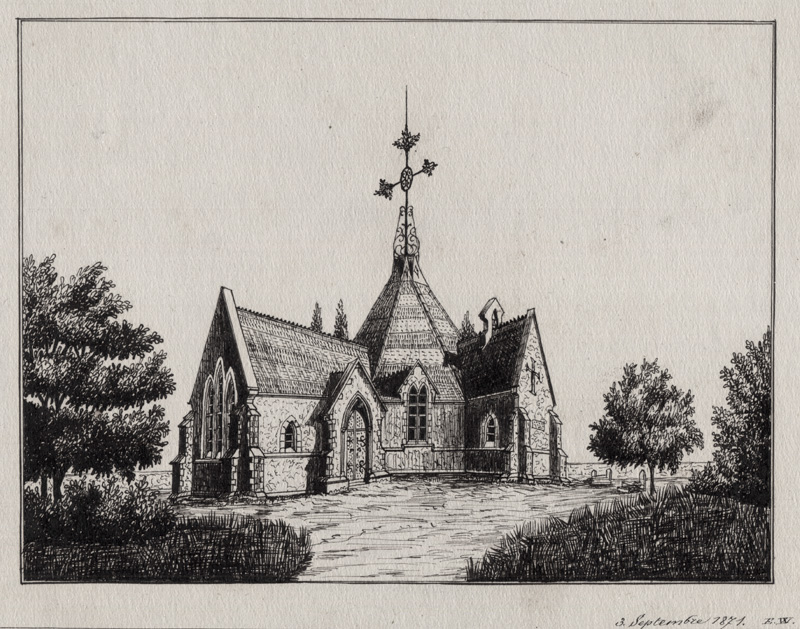 |
A sketch of the Boudja Anglican Church done in 1871 - artist Eugenia Weber - view the series.
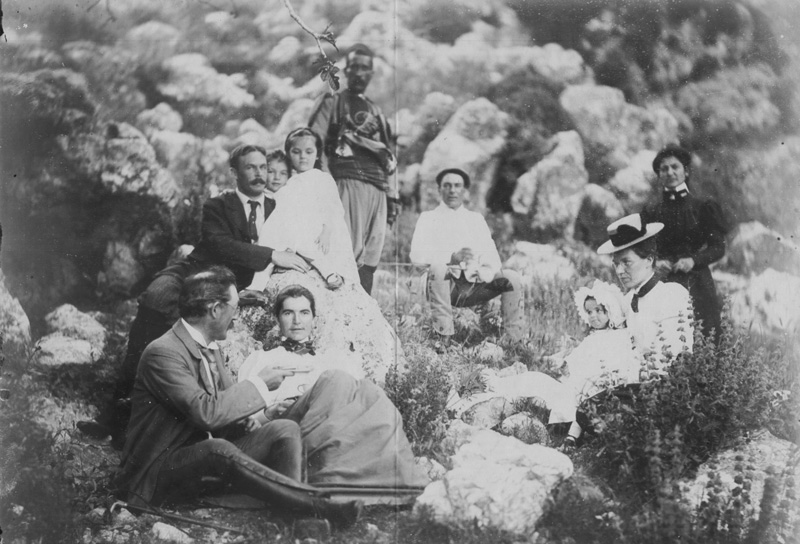 |
A family picnic, location unknown. there is a cavass in the background, man with moustache is Frank McVittie, sitting in front is his wife Nelly.
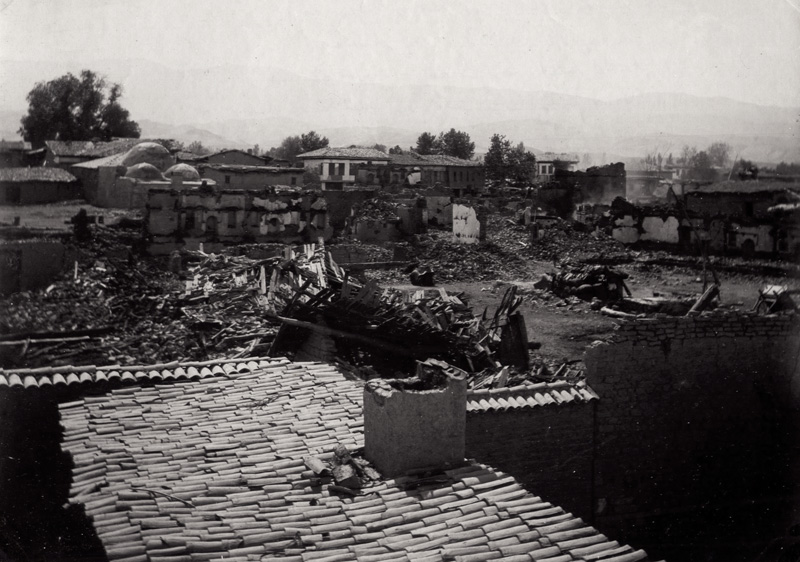 |
Caption: Darakeuy (from MacAndrew’s licorice factory) - paper note: Frank worked for this company, which had extensive interests. For some reason, after it... The place may be Dereköy, in the Aydın province and it appears to show extensive earthquake damage.
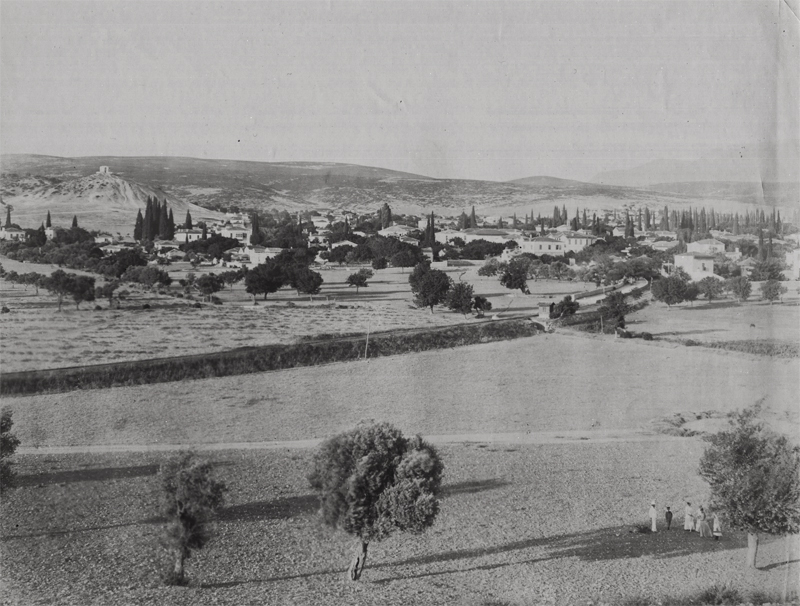 |
What appears to be a commercially available panoramic photographed purchased by the family: Boudjah village on the outskirts of Smyrna possibly viewed from ‘Forbes Hill’ (around hill no 31 marked on this around the same period Greek drawn plan of the area), with the railway line seen on the curving embankment. The tower-like structure marked in Greek sources as ‘Petraki tower’ in the distance maybe a ‘kule’, a recreation tower favoured by the local Greeks to catch the evening breeze, with wine and company. The name was derived from the ‘owner’ named Petros Tingirian, an Armenian Catholic who settled here and laboured to create a new ‘universal language’ (Seh-lerai) - further info: This structure no longer stands and the tall square columnar structure visible may point it to being originally an ancient temple or the fact that by the time this photo was taken around 1910 only the core of this house remained.
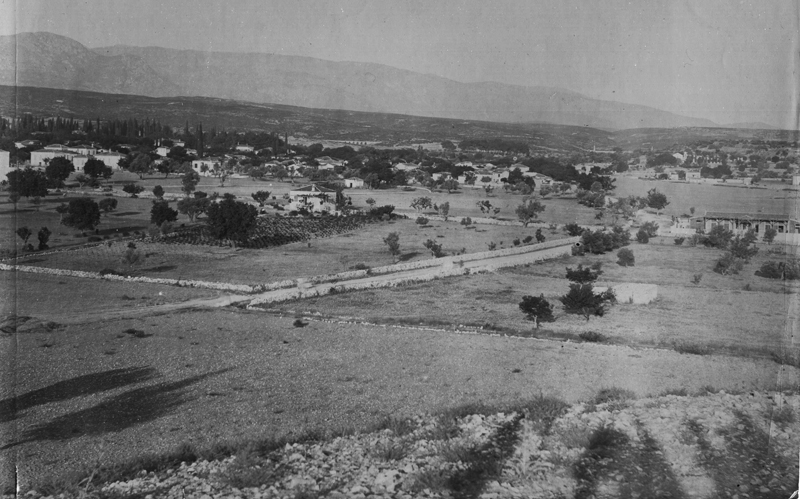 |
The continuation of the same panaromic photograph of Boudjah, showing an aquaduct of in the distance, not the Roman ones standing today along St Anne’s Valley (to the NW of this vantage point) but a minor one no longer standing that carried water to the city from the source of Kangöl.
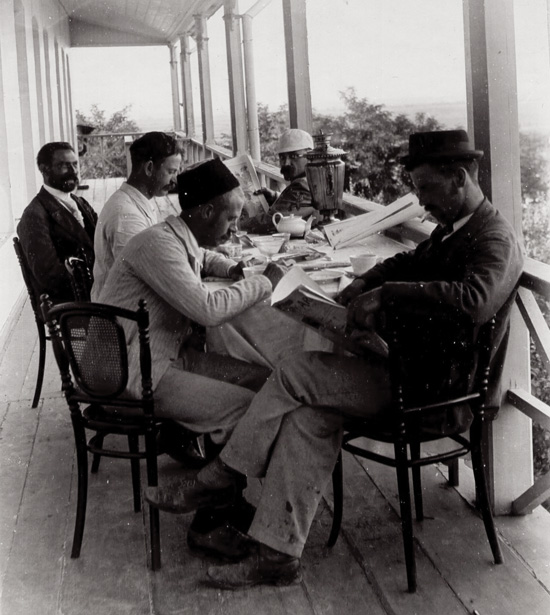 |
Caption: ‘Frank on a trip upcountry has been ... raisons and liquorice’
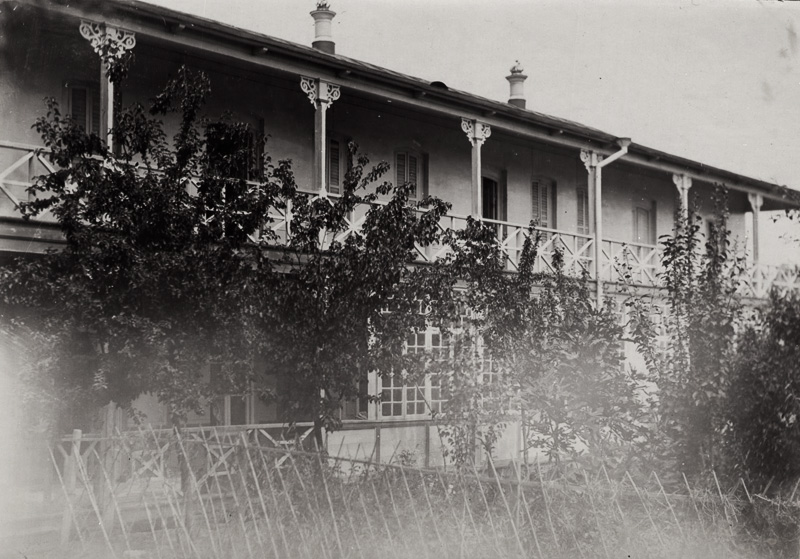 |
Photograph of the same unnamed location company house in Anatolia.
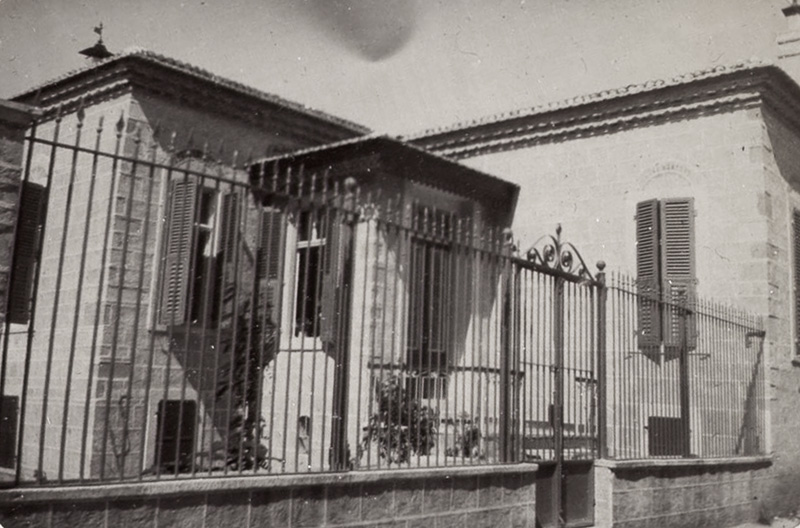 |
Eugenia & Margaret’s house in Boudja, later sold to Winnie Parkinson (no 1, 113th block in Buca).
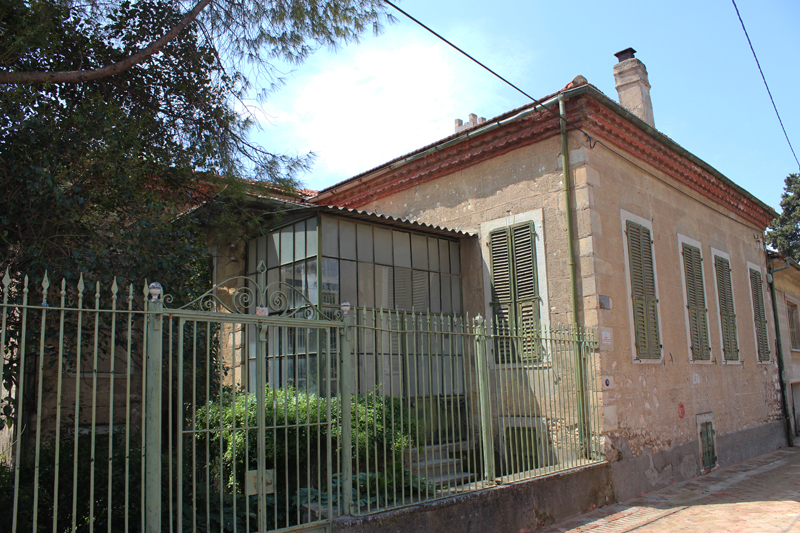 |
The same house still stands today in central Buca, with minor alterations.
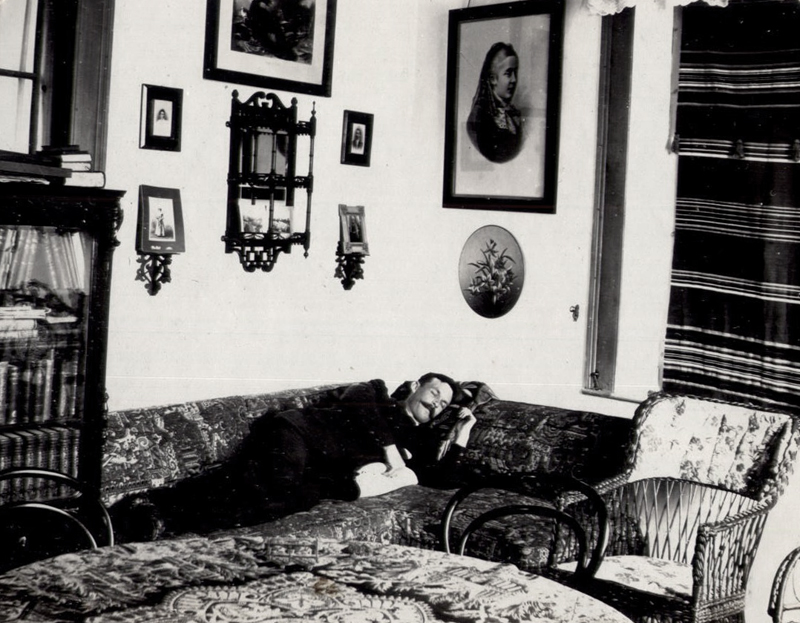 |
Caption: ‘Frank asleep’ - presumably the sitting room of the family house in Boudja.
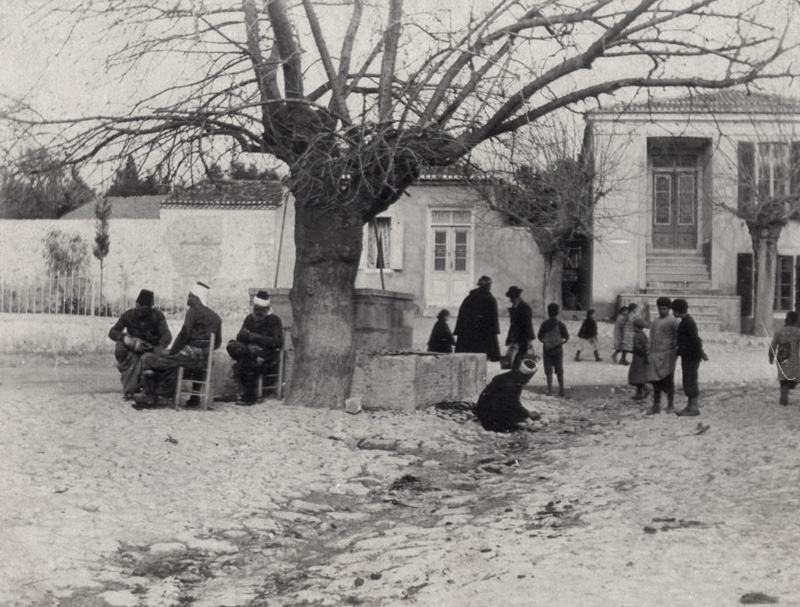 |
Caption: ‘Boudja street’. According to local researcher Arda Akaslan, the house on the right is still standing, the well is gone and according to the elders of the neighbourhood, the garden on the left was the garden of the former police station (Karakol).
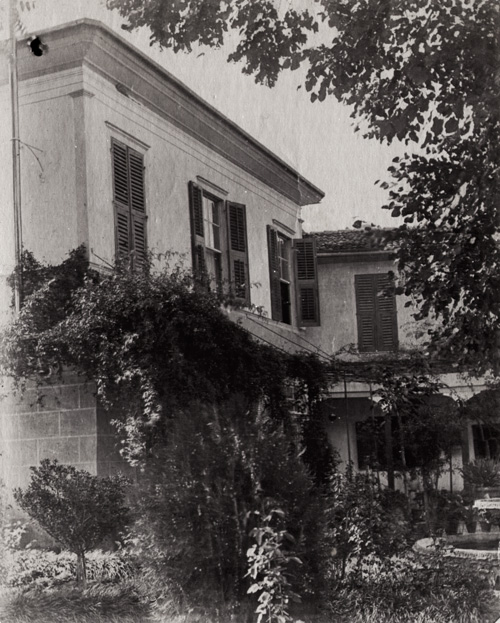 |
Caption: ‘Weber house Boudja’ - the house of Theo and Eugenia Weber where Emily was born.
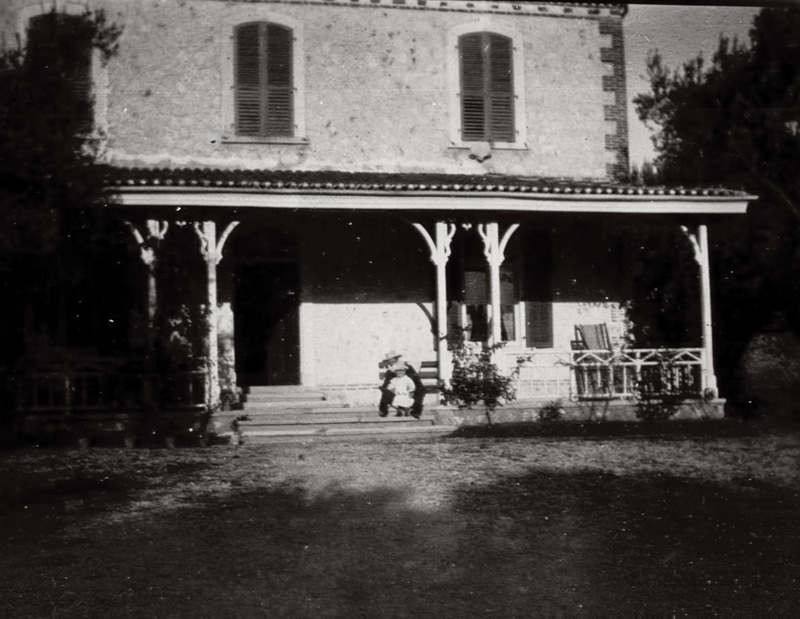 |
Caption: ‘McVittie Boudja house’, next to the old ‘Konak’ police station.
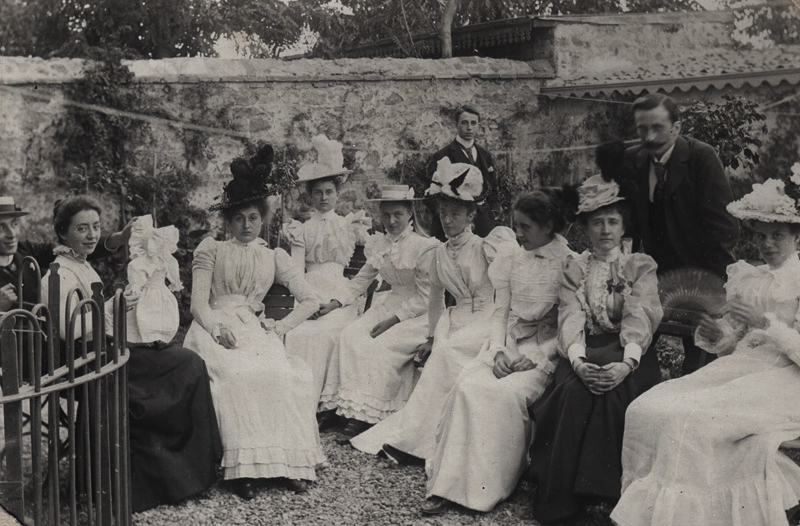 |
Emily Weber witout a hat in white dress and Frank standing behind - Frank and Emily’s wedding reception, 1902/3. There were 2 civil weddings (British & German) as well as a church wedding in Boudja.
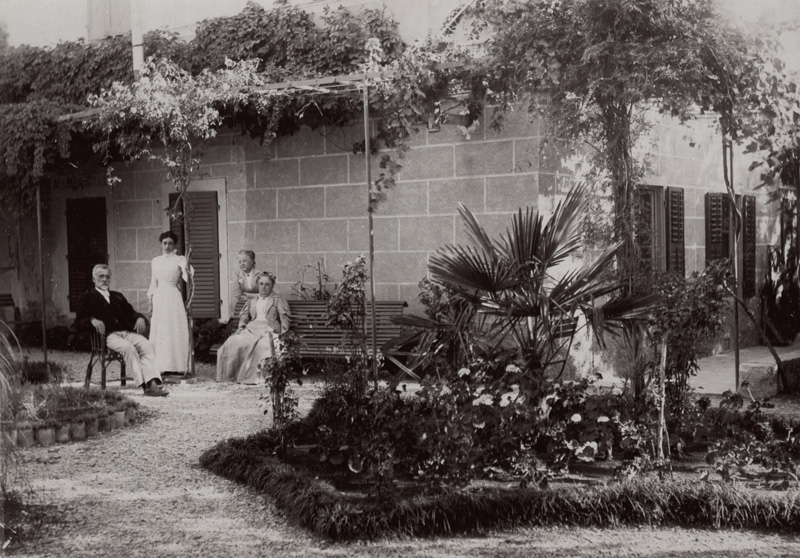 |
Left to right: George Weber, Emily Weber, Bella Wolters, Eugenia Weber - back of Weber House Boudja.
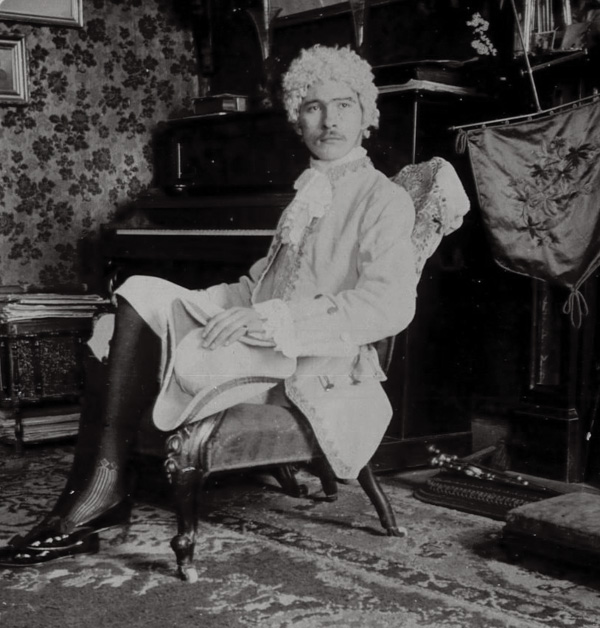 |
Caption: ‘Frank McVittie, amateur dramatics’.
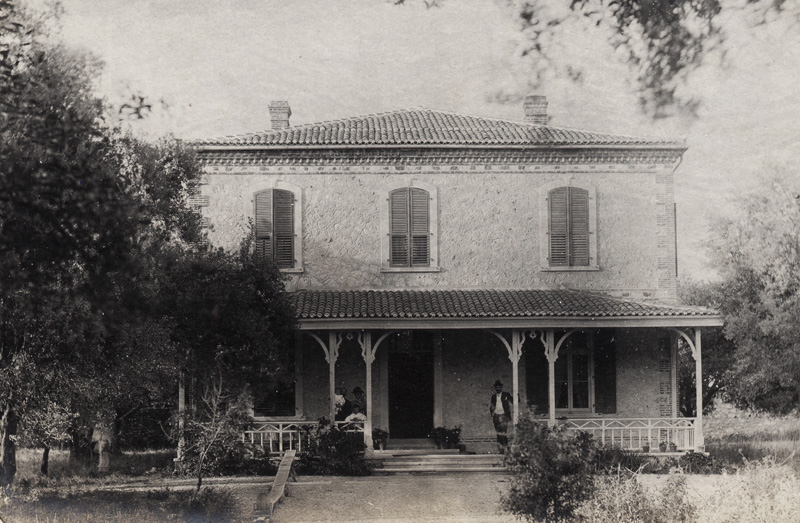 |
McVittie house in Boudja in its early days before Emily created the garden.
 |
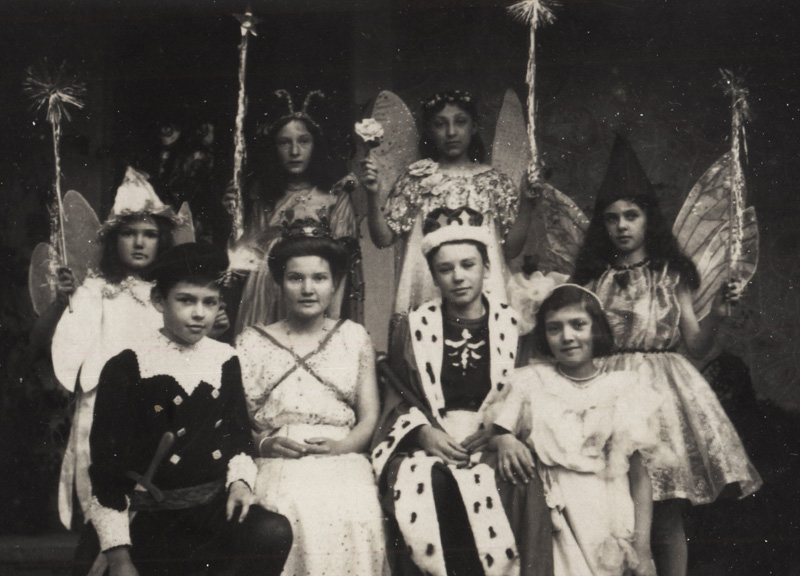 |
Boy on the left with the lace collar is Wilfied McVittie and the boy dressed as the king is George McVittie.
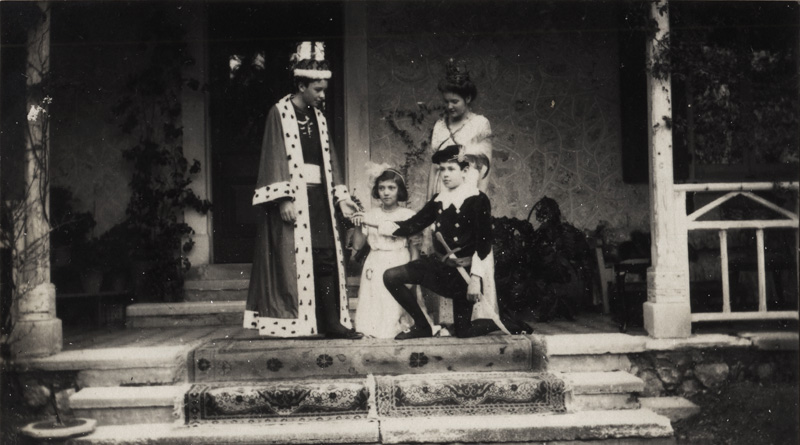 |
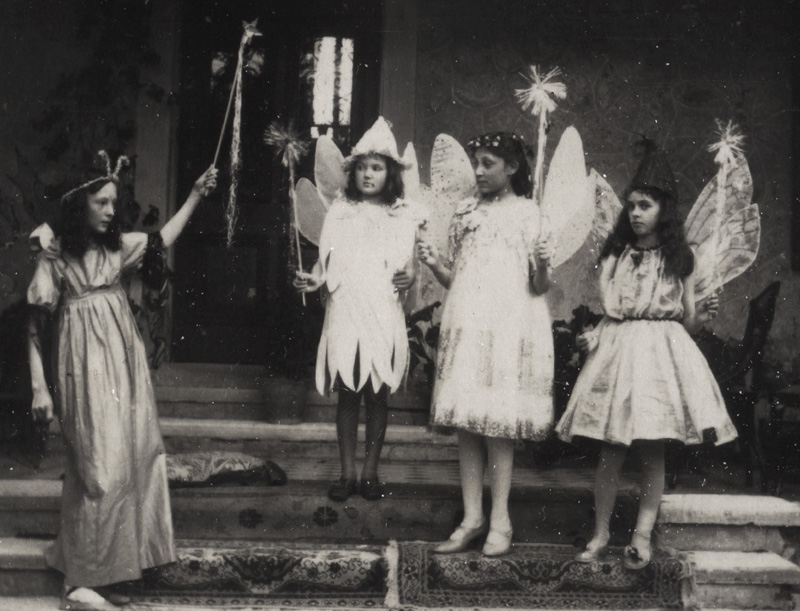 |
A series of photos of junior amateur dramatics on the McVittie terrace in Buca.
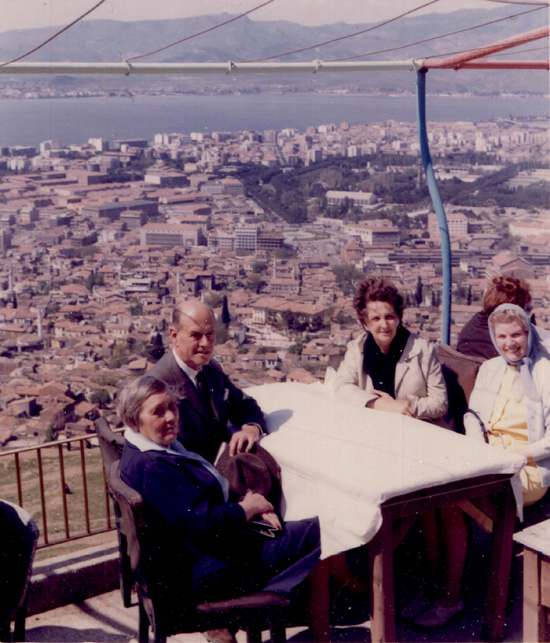 |
My parents visiting Izmir on Swan Hellenic cruise in the 1960s, my mother Morna with the scarf, cafe on Mount Pagus. The two other ladies are noted on the back as Winnie Parkinson and Gladys Routh.